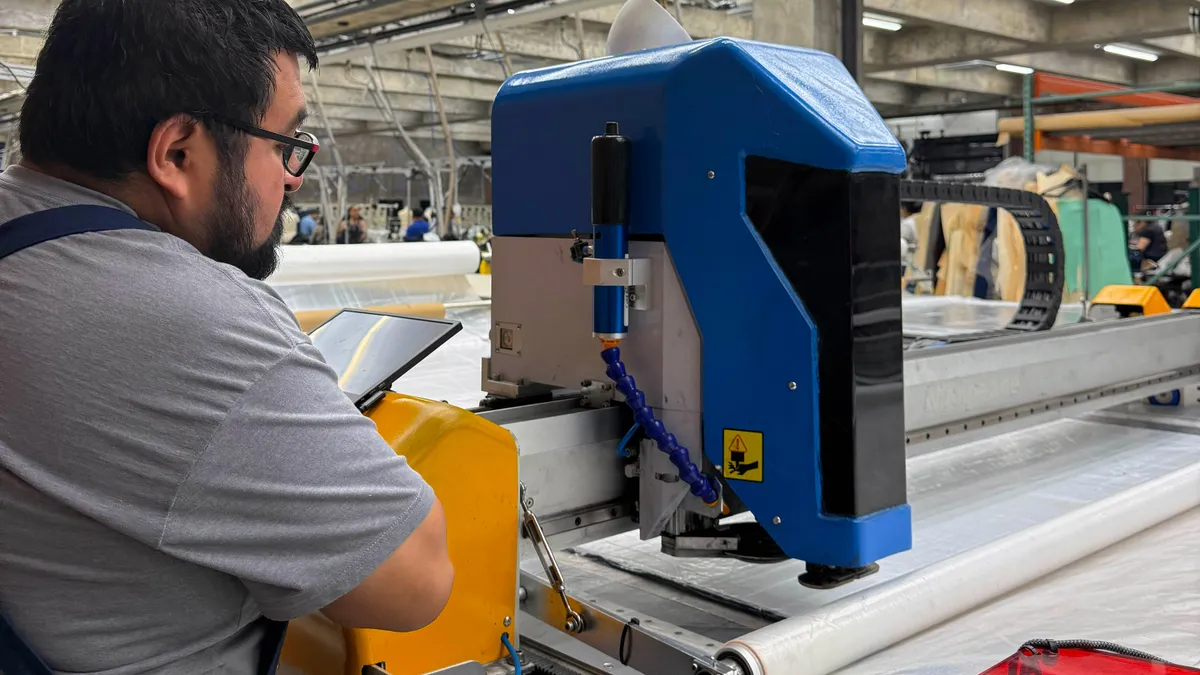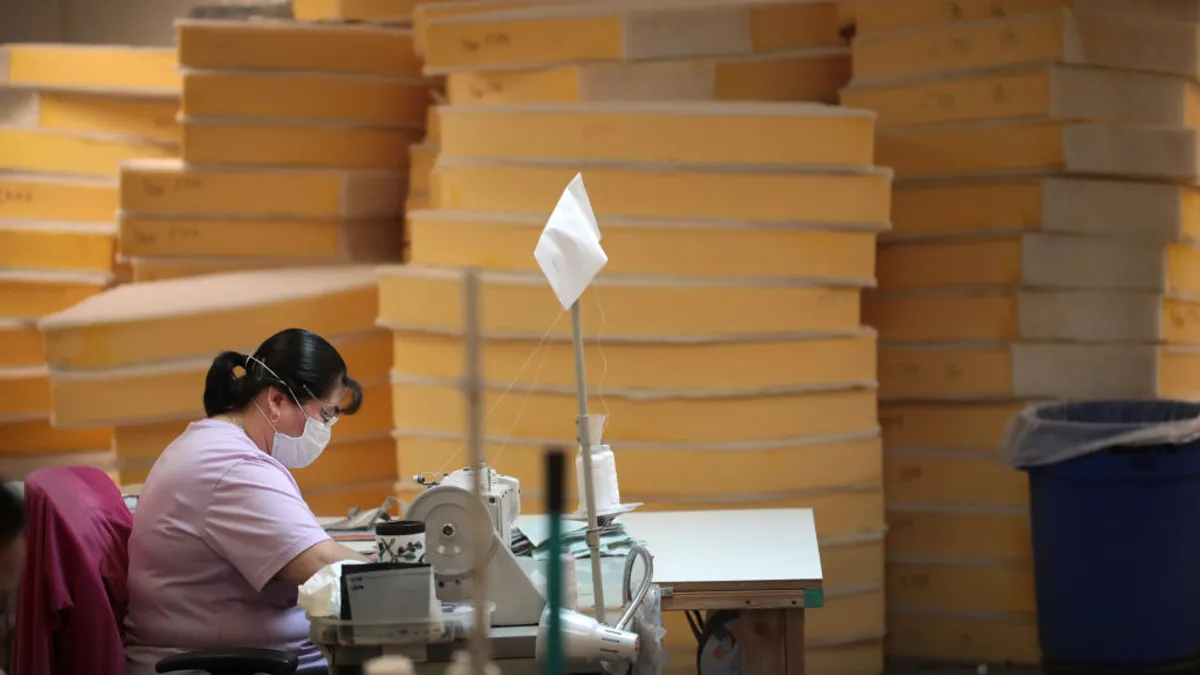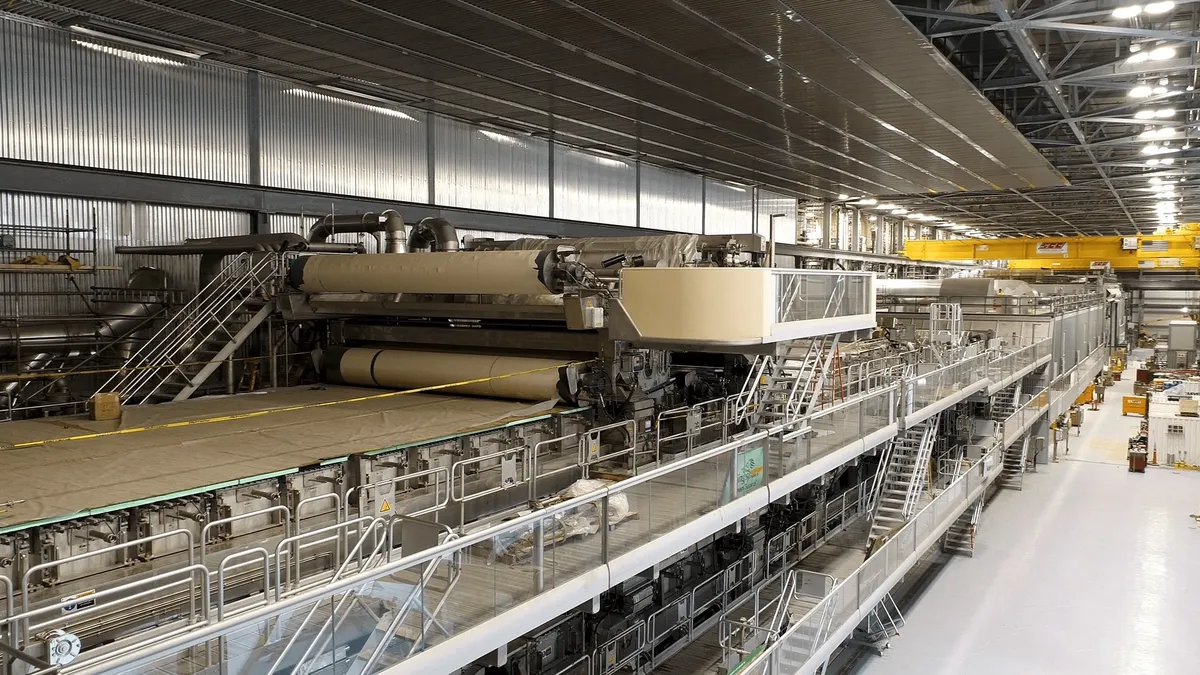Editor's note: This story is the third installment of “For Hire,” a series exploring manufacturing companies' push to attract and retain talent. Have a manufacturing story you want told? Email us at [email protected].
In 2019, women made up 30% of the manufacturing industry. That’s despite making up over 50% of the U.S. population and 47% of the total national workforce.
The fact that women make up a significantly smaller portion of the manufacturing labor force is central in the conversation around how to close the industry's labor gap.
As companies consider how to fill the more than 800,000 worker shortfall in the industry, many are weighing how to better recruit and retain women, who enter and stay in manufacturing at lower rates than men. Some are offering on-campus childcare, while others are investing more heavily in mentoring and leadership programs.
Such initiatives are proving crucial for companies as they consider how to keep talent in a chronically tight labor market.
The Manufacturing Institute recently honed in on the issue in a November 2022 study on how to close the gender gap. The Institute received 190 responses to its survey, and conducted interviews with executives at seven manufacturing companies to inform their research, including Dow and Cornerstone Building Brands.
The study found that women make up an undeniable portion of potential talent. If the percentage of women in manufacturing were raised to 35%, it would bring 800,000 workers into the industry, enough to fill nearly all of the open roles in the market.
"The key theme of one of the major problems that all manufacturers are trying to solve is the availability of quality talent and the labor shortage that we're experiencing," said Rose Lee, president and CEO of Cornerstone Building Brands, during a recent Manufacturing Institute webinar.
"There is a very large untapped potential in a pool of talent that we're not able to fully bring into the fold of the manufacturing space at large."
Childcare is a central issue for women
Across manufacturing companies, one issue remains critical to recruiting and retaining women – childcare.
The availability and affordability of childcare is an issue that plagues families in many industries, but particularly in manufacturing and production roles, where work is more likely to be on an in-person shift schedule. In addition, many women in these roles are single parents, said Allison Grealis, founder and president of the Women in Manufacturing Association.
"Many of them are on their own supporting their families," Grealis said. "So, the more that we can intervene and help them from an early stage in their career so that they can be successful and rise within their organizations and in this industry, the better for all of us."
Lack of childcare ranked as one of the top challenges facing women employees in the Institute's survey. Nearly 50% of manufacturing leaders cited it as a top challenge heard from women, versus only 8% for men.
Women are much more concerned by flexibility, childcare than men
Some companies have opted to tackle this issue by bringing childcare onsite. Toyota offers childcare services at its Indiana and Kentucky facilities for children as young as six-weeks-old.
For smaller companies, another option is to subsidize childcare costs for employees, or partner with a local provider, said Manufacturing Institute President Carolyn Lee.
"Obviously, a company the size of Toyota can do many things and create an onsite facility and some other other opportunities," Lee said. "But even a small employer can work locally to create some creative solutions."
The need for childcare services goes hand-in-hand with the need for greater flexibility in schedules. Giving parents shift schedules that allow for things such as school pickup or dropoff can be key, Lee noted.
According to the Institute’s survey, 63% of respondents ranked lack of flexibility as the number one challenge heard from women employees
"Flexible shift hours, or looking to offer flexibility to employees, is another way to get at the care issues that is next to formal childcare options," Lee said. "There's no one silver bullet. We need to look at varied approaches because people have various needs."
Creating an environment for women to succeed
A lack of mentorship and opportunities for advancement is another obstacle plaguing many women in the industry, and it starts at the beginning, Graelis said. Companies need to be conscious of how they market themselves to women and tell the story of their workplace.
This includes using inclusive language in job descriptions and reconsidering which skills they list as "required" versus "desired," which can help more individuals feel confident in applying for a position, Grealis said.
"The more that we can intervene and help them from an early stage in their career so that they can be successful and rise within their organizations and in this industry, the better for all of us."

Allison Grealis
Founder and President of the Women in Manufacturing Association
Once in the company, women need mentors who can help show them an upward career path. A study earlier this year from Xometry and Women in Manufacturing found that 44% of women cited leadership/management training as having the most significant impact on their career advancement, with mentorships at 35%.
"Mentoring programs are also highly successful, whether they be formal and or informal within companies," Grealis said. "A lot of companies have even started to use software that helps them match people within different facilities that have similar backgrounds."
Some companies are also offering discussion prompts and guides for mentees and mentors to facilitate discussion, she added.
On the shop floor, it comes down to creating an atmosphere of inclusion and building on momentum. Creating this environment as a small manufacturer can be difficult at the beginning, but once there are a few champions on the factory floor, it's a "gamechanger," Aneesa Muthana, president and co-owner of Pioneer Services, said during the Institute's webinar.
"[It's about] having those allies and sending a message and not putting your female employees on a pedestal, but instead work towards stewardship," Muthana said. "Work towards teamwork, and make everyone understand that when we lose we all lose, when we win, we all win.”




















